AWS Solutions Architect Associate Certification
Services Database
QLDB
In this lesson, we'll explore AWS Quantum Ledger Database (QLDB) and explain why traditional databases fall short for ledger applications. QLDB offers a fully managed, immutable ledger database with transparency and cryptographic verification to meet the rigorous demands of ledger use cases.
Why Traditional Databases Are Not Ideal for Ledger Use Cases
Traditional databases have several limitations when used as a ledger:
- Mutability: Records can be updated or deleted, making data mutable rather than tamper-proof.
- Lack of Transparency: Data changes can be hard to trace, impeding auditability.
- Centralization: Managed by a single entity, they do not support decentralized, multi-party systems.
- Single Point of Failure: Centralized servers can become a single point of vulnerability.
- Absence of Consensus Mechanisms: They lack built-in methods for distributed trust.
- Limited Privacy Features: Advanced privacy options like selective disclosure or confidential transactions are often missing.
Key Insight
QLDB addresses these limitations with an immutable, append-only journal that ensures data integrity and provides complete auditability.
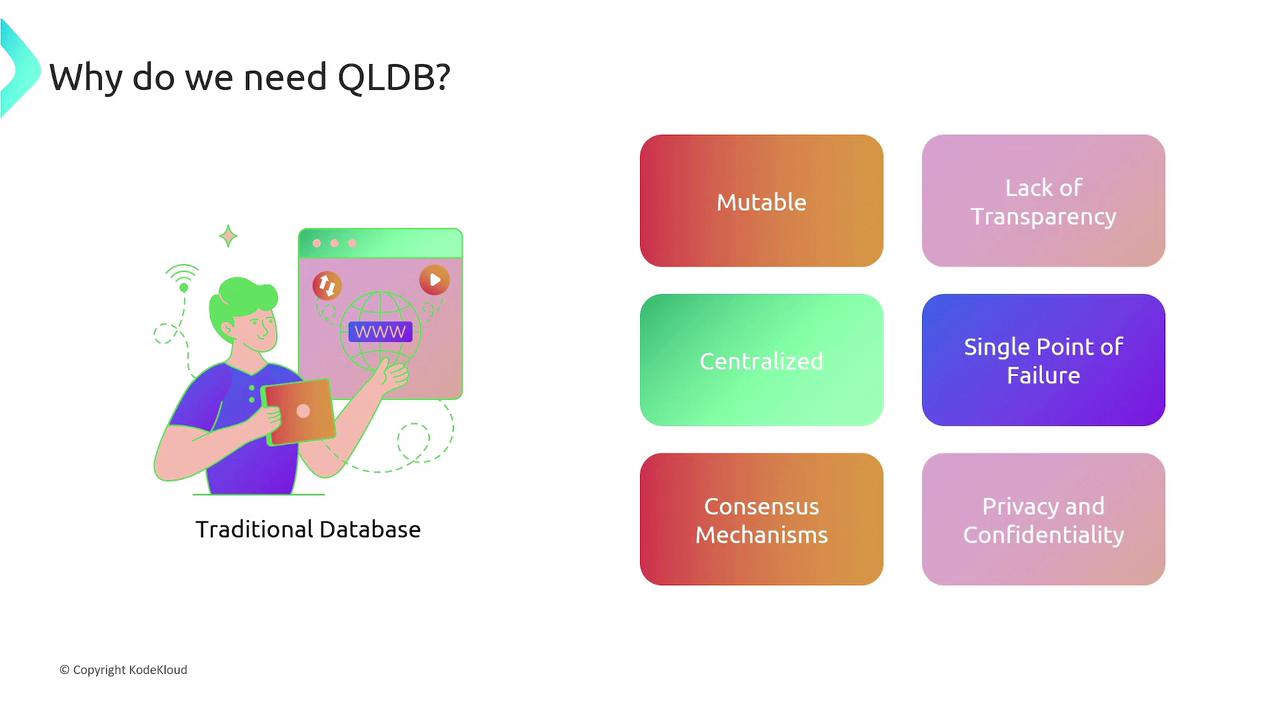
Overcoming Limitations with the QLDB Journal
In a conventional database structure, data is stored in tables, and every transaction is recorded in a mutable transaction log. While essential for disaster recovery, these logs can be directly modified, compromising data integrity. QLDB replaces this approach with an immutable, append-only journal that records every write operation—whether an insert, update, or delete.
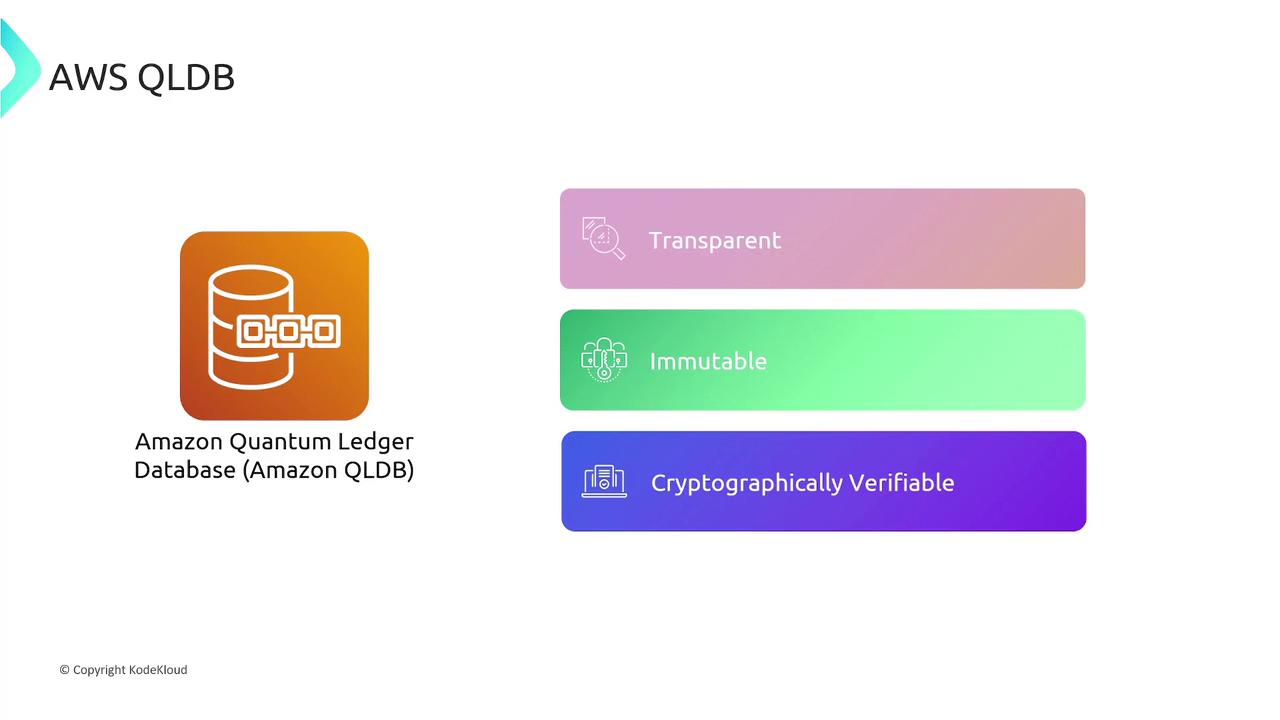
A Car Lifecycle Example
Imagine using QLDB to track a car’s lifecycle:
- Initial Entry: The car’s first record is written to the journal as a block containing a unique identifier, metadata, and a hash value. This entry is updated in both the current data table (C table) and the history table (H table).
- First Resale: When the car is sold to Thomas, a new journal entry is added. The C table reflects the current owner, and the H table records the transaction.
- Subsequent Resale: When sold to Smith, the process repeats—appending a new block to the journal, ensuring every transaction is recorded chronologically and securely.
Because QLDB's journal is append-only, every change is permanently recorded. This design guarantees that the full history of the ledger can be queried, as no data is ever altered once committed.
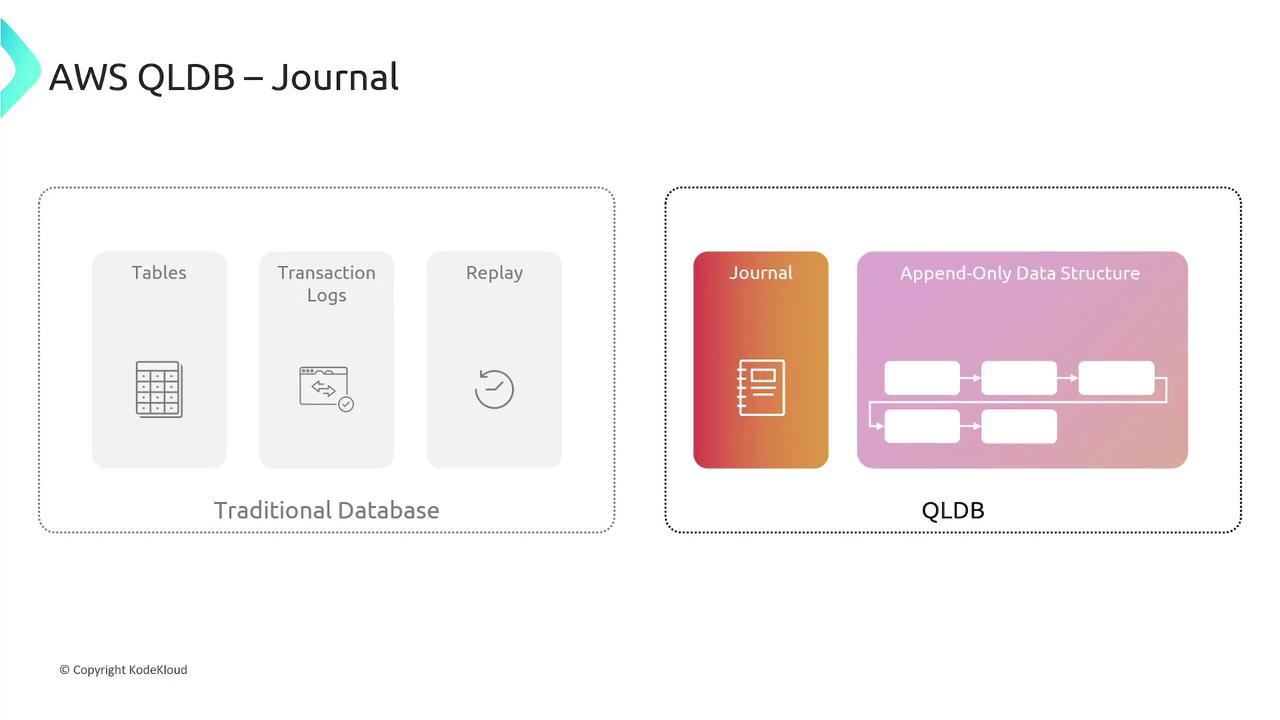
Ensuring Data Integrity with Cryptographic Verification
QLDB writes one block to its journal per transaction. Each block contains entry objects representing the processed document and the PartiQL statements applied. These blocks are sequenced and cryptographically linked using SHA-256, similar to blockchain technology, to maintain data integrity.
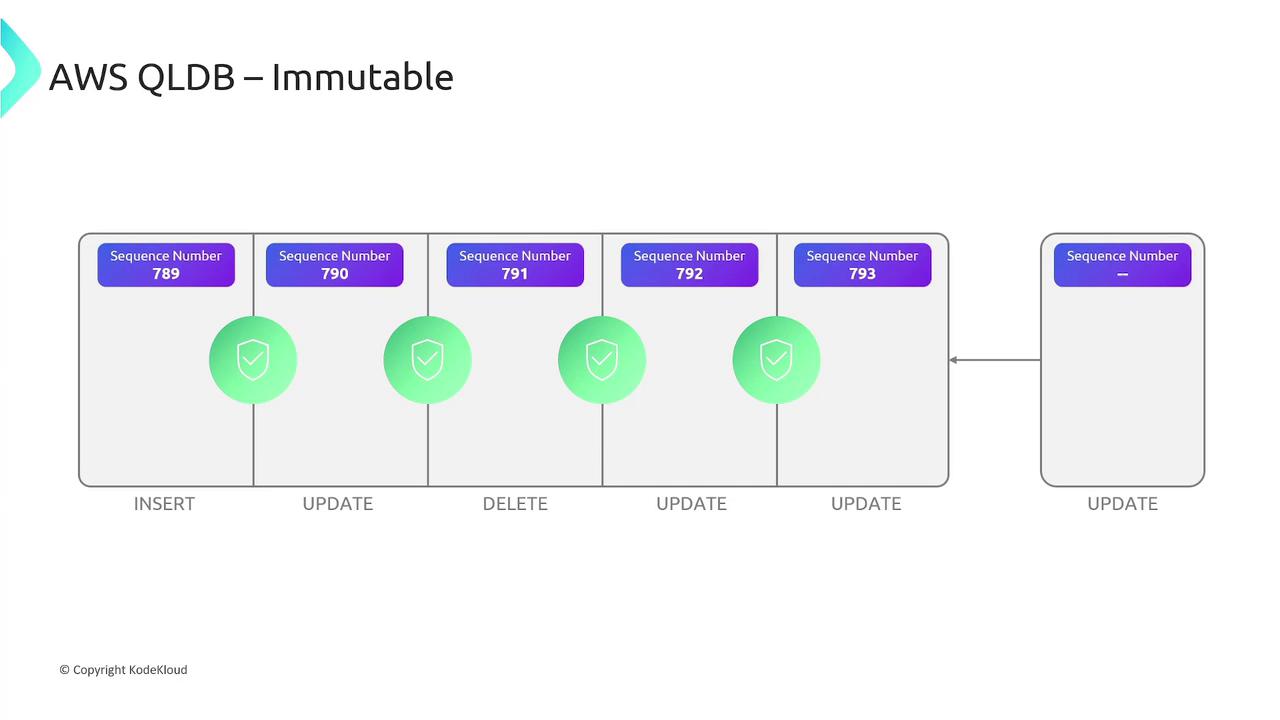
Using digest and Merkle audit proofs, QLDB lets you verify that no unauthorized changes have occurred. Each block, containing data documents, metadata, and PartiQL statements, is hashed and chain-linked to ensure a verifiable record.
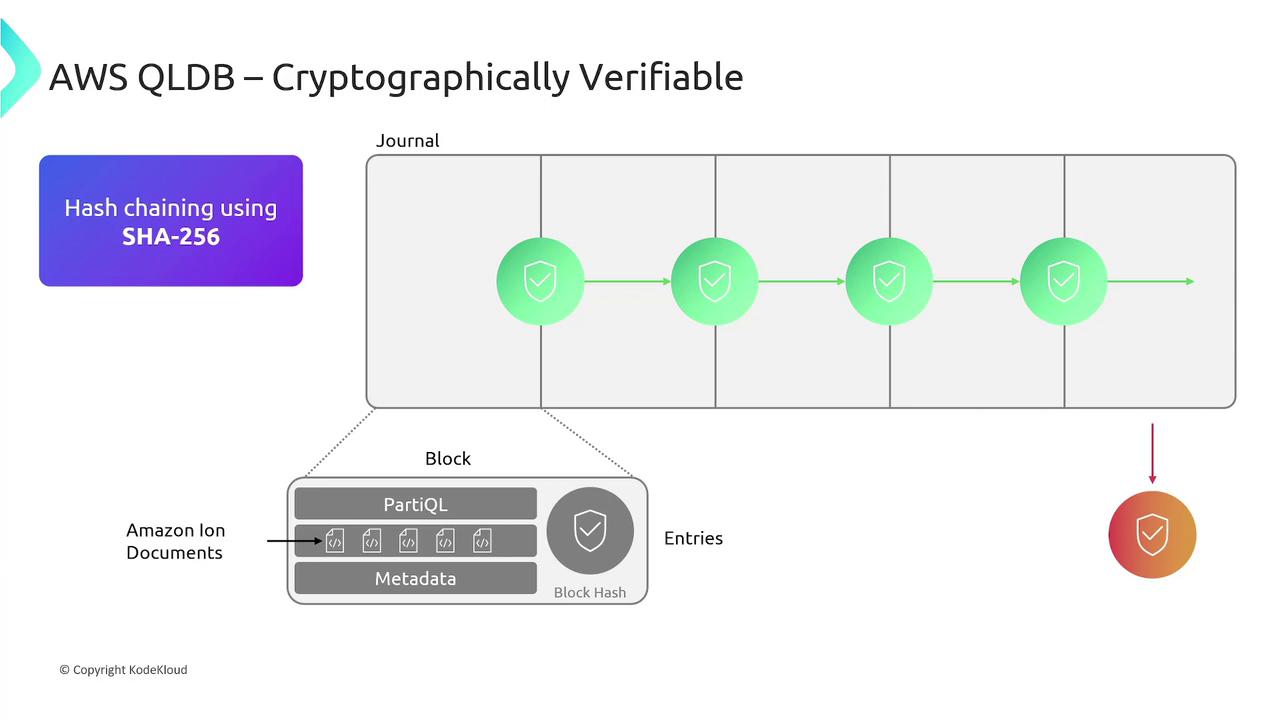
Core Features of QLDB
QLDB brings several powerful features to ledger management:
- Open-Source and SQL-Compatible Query Language: Utilizes PartiQL which extends SQL to work with Amazon Ion, its document-oriented data model.
- Fully Managed and Serverless: Eliminates the need for server management while ensuring high availability.
- ACID Compliant: Supports enterprise-level reliability for mission-critical applications.
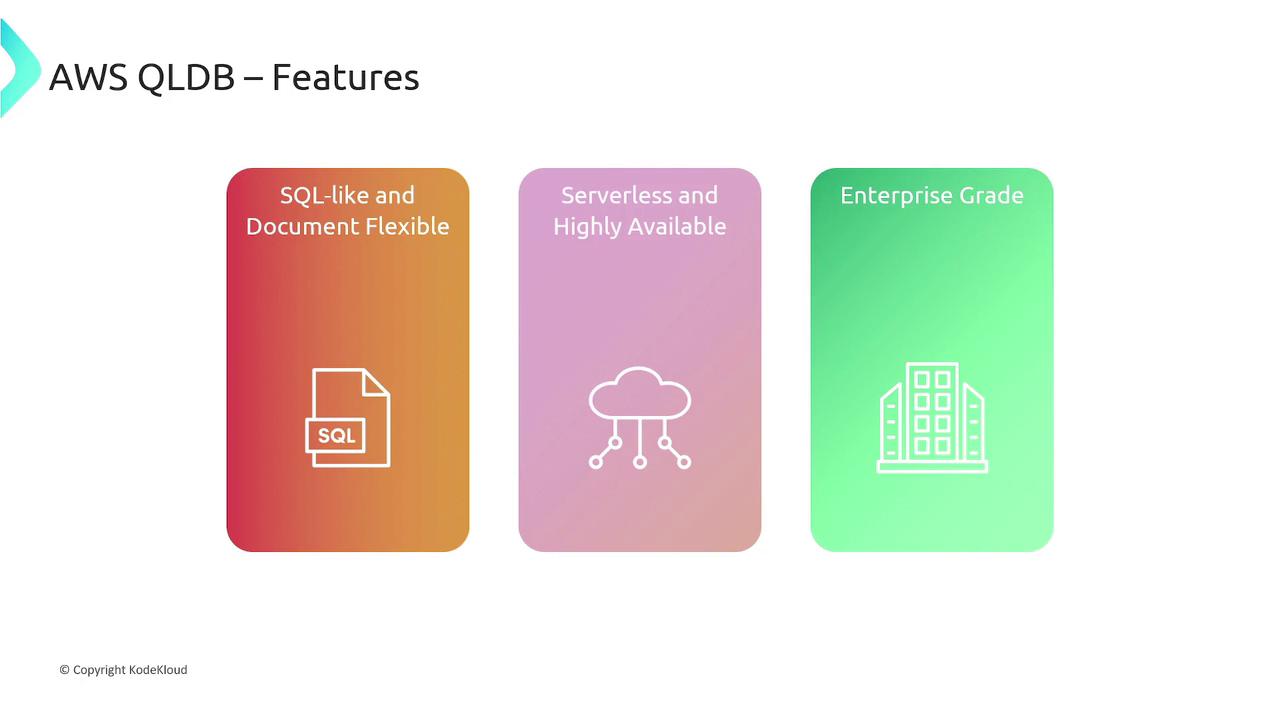
Use Cases for QLDB
QLDB is ideal for applications that demand a verifiable, immutable ledger:
- Financial Transactions: Track credit and debit card purchases.
- Supply Chain Management: Document shipments and purchases with an indelible audit trail.
- Claims History: Maintain an immutable record of insurance or digital claims.
![]()
Below is a comparison table summarizing the key differences between traditional databases and AWS QLDB:
| Feature | Traditional Database | AWS QLDB |
|---|---|---|
| Data Mutability | Mutable records can be updated or deleted | Immutable, append-only journal records all changes |
| Transparency | Limited data traceability | Full auditability with cryptographically verifiable logs |
| Centralization | Single-entity management | Central trusted authority with complete history preservation |
| Single Point of Failure | Vulnerable if the central server fails | Serverless, highly available architecture |
| Consensus Mechanism | Absent | Built-in cryptographic hash chaining |
| Privacy Features | Basic | Supports advanced privacy measures |
Learn More
Discover further details in the AWS QLDB documentation.
Dual Table Structure: Current vs. History
QLDB organizes data using two table types:
- Current Table (C table): Reflects the latest data state.
- History Table (H table): Stores an immutable ledger of all historical changes.
This structure allows for rapid access to current data while preserving a comprehensive audit trail.
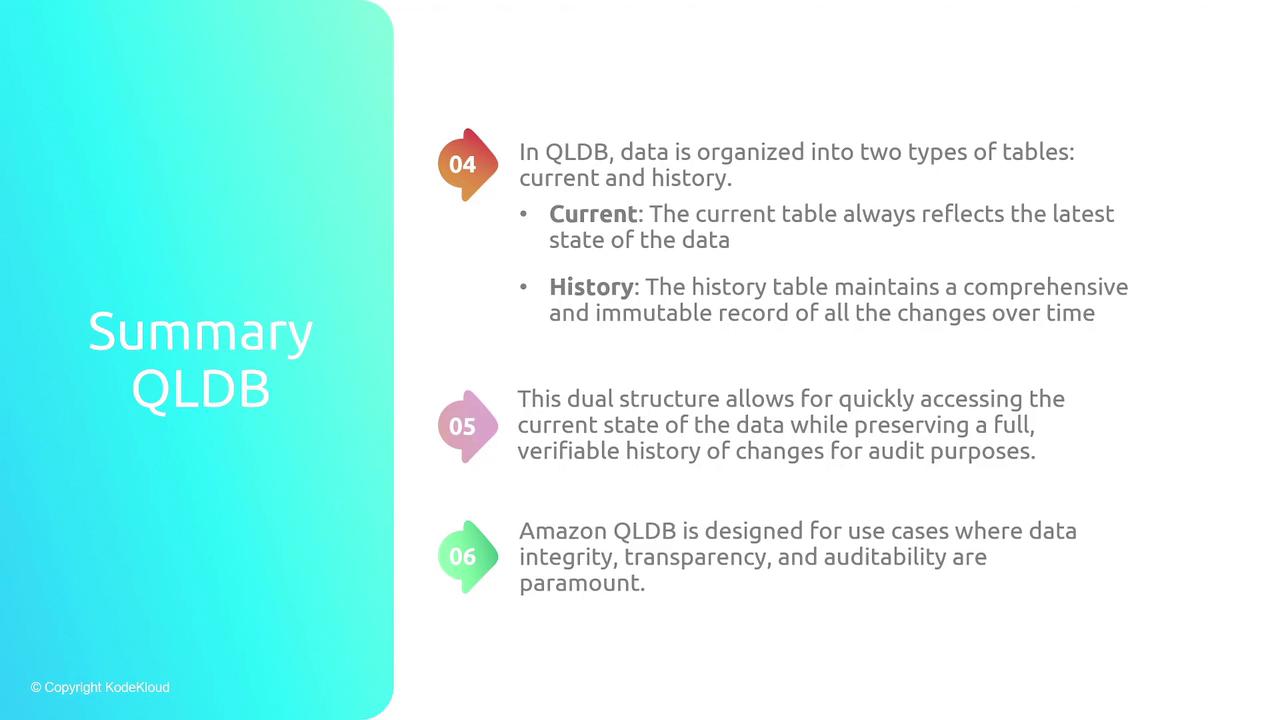
Conclusion
Amazon QLDB transforms ledger management through its immutable, highly transparent, and cryptographically verifiable transaction log. With its append-only journal, dual table architecture, and robust verification through SHA-256 hash chaining, QLDB is the ideal solution for applications where data integrity, transparency, and auditability are paramount.
Watch Video
Watch video content